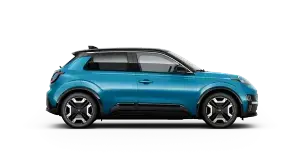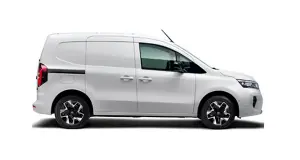Nissan ARIYA 2024 Owners Manual
9.1.7. Driving safety precautions
Your vehicle is designed for both normal and off-road use. However, avoid driving in deep water or mud as your vehicle is mainly designed for leisure use, unlike a conventional off-road vehicle.
Remember that Two-Wheel Drive (2WD) models are less capable than Four-Wheel Drive (4WD) models for rough road driving and extrication when stuck in deep snow, mud, or the like.
Please observe the following precautions:

Drive carefully when off the road and avoid dangerous areas. Every person who drives or rides in this vehicle should be seated with their seat belt fastened. This will keep you and your passengers in position when driving over rough terrain.
Do not drive across steep slopes. Instead drive either straight up or straight down the slopes. Off-road vehicles can tip over sideways much more easily than they can forward or backward.
Many hills are too steep for any vehicle. If you drive up them, you may stall. If you drive down them, you may not be able to control your speed. If you drive across them, you may roll over.
Do not shift ranges while driving on downhill grades as this could cause loss of control of the vehicle.
Stay alert when driving to the top of a hill. At the top there could be a drop-off or other hazard that could cause an accident.
If your EV system stalls or you cannot make it to the top of a steep hill, never attempt to turn around. Your vehicle could tip or roll over. Always back straight down in R (Reverse) range. Never back down in N (Neutral), using only the brake, as this could cause loss of control.
Heavy braking going down a hill could cause your brakes to overheat and fade, resulting in loss of control and an accident. Apply brakes lightly and use B range to control your speed.
Unsecured cargo can be thrown around when driving over rough terrain. Properly secure all cargo so it will not be thrown forward and cause injury to you or your passengers.
To avoid raising the centre of gravity excessively, do not exceed the rated capacity of the roof rack (where fitted) and evenly distribute the load. Secure heavy loads in the cargo area as far forward and as low as possible. Do not equip the vehicle with tyres larger than specified in this manual. This could cause your vehicle to roll over.
Do not grip the inside or spokes of the steering wheel when driving off-road. The steering wheel could move suddenly and injure your hands. Instead drive with your fingers and thumbs on the outside of the rim.
Before operating the vehicle, ensure that the driver and all passengers have their seat belts fastened.
Lower your speed when encountering strong crosswinds. With a higher centre of gravity, your vehicle is more affected by strong side winds. Slower speeds ensure better vehicle control.
Do not drive beyond the performance capability of the tyres, even with 4WD engaged (4WD models).
For 4WD equipped vehicles, do not attempt to raise two wheels off the ground and shift the transmission to any drive or reverse position with the EV system running. Doing so may result in drivetrain damage or unexpected vehicle movement which could result in serious vehicle damage or personal injury.
Do not attempt to test an 4WD equipped vehicle on a 2-wheel dynamometer, or similar equipment even if the other two wheels are raised off the ground. Make sure you inform test facility personnel that your vehicle is equipped with 4WD before it is placed on a dynamometer. Using the wrong test equipment may result in drivetrain damage or unexpected vehicle movement which could result in serious vehicle damage or personal injury.
When a wheel is off the ground due to an unlevel surface, do not spin the wheel excessively (4WD models).
Accelerating quickly, sharp steering manoeuvres or sudden braking may cause loss of control.
If at all possible, avoid sharp turning manoeuvres, particularly at high speeds. Your vehicle has a higher centre of gravity than a conventional passenger car. The vehicle is not designed for cornering at the same speeds as conventional passenger cars. Failure to operate this vehicle correctly could result in loss of control and/or a rollover accident.
Always use tyres of the same type, size, brand, construction (bias, biasbelted or radial), and tread pattern on all four wheels. Install traction devices on the front wheels when driving on slippery roads and drive carefully.
Be sure to check the brakes immediately after driving in mud or water. See
.Avoid parking your vehicle on steep hills. If you get out of the vehicle and it rolls forward, backward or sideways, you could be injured.
Whenever you drive off-road through sand, mud or water as deep as the wheel hub, more frequent maintenance may be required. See the maintenance schedule shown in the “9. Maintenance and schedules” section.










